This blog post is part of 20sStreets, in which we explore local history stories in the 1921 Census, connecting people of the 2020s with people of the 1920s. Discover your own local history and enter our 20sStreets competition.
Miss Hare’s establishment is unique…in modernity of methods and in efficiency, it is one of the best of its kind in the country.
‘Unique Establishment at Burgess Hill’, Mid Sussex Times, 22 September 1925, page 5
This blog post looks at the Dene Hollow Oral School for the Deaf, which was established by Mary Hare. As the above extract shows, the Mid Sussex Times praised the work of the school and the modern approach it took to teaching.
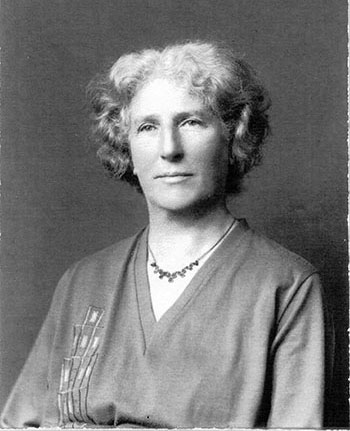
The 1921 Census allows us to research larger census schedules, such as public and charitable institutions. These include boarding schools, nursing homes, workhouses and asylums, to name just a few. The Dene Hollow Oral School for the Deaf was recorded as an institution, and all the pupils boarded at the school. Numerous deaf schools were located across the country and can be found in the census. You can find out more about locating the deaf community in the 1921 Census in this previous blog.
Hare attended the Ealing Training College for Teachers of the Deaf, which focused on the ‘oral method’ of teaching. This meant that those born deaf were taught how to speak, rather than relying solely on sign language, a practice which Hare championed throughout her life. In 1885, Hare opened her own school for the deaf. After trying various locations, the school eventually settled in Burgess Hill, Sussex, in 1916.
The school was located on London Road and is pictured in this photograph. Moreover, the school’s vast grounds also held tennis courts, and pitches for lacrosse and football (footnote 1).
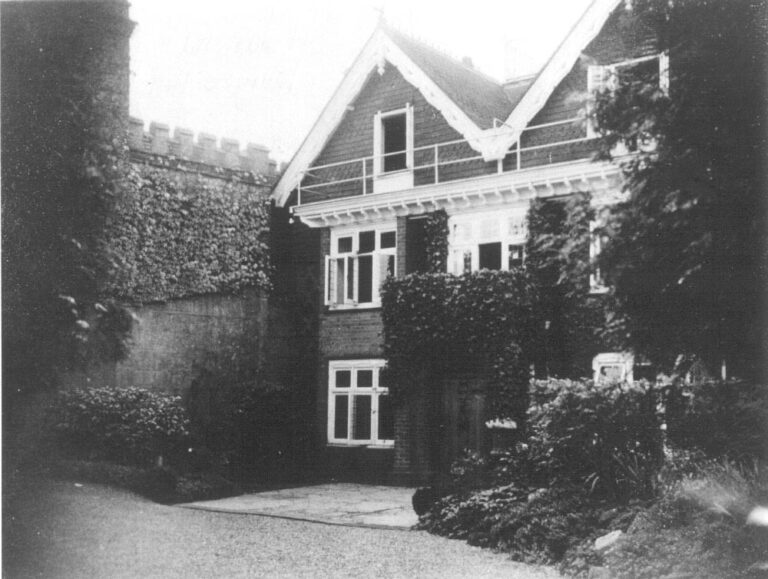
On the 1921 Census, Hare is listed as head of household and living at ‘Private School Dene Hollow Burgess Hill’. There was also a housekeeper, a nurse, two teachers, and two servants living at the school, in addition to 40 pupils. The pupils varied in age, from 5 year old Margaret Greenwood to 21 year old Isabel Dundas. A memorandum produced by the Ministry of Education stated that ‘[t]he school was then for boys and girls of all ages, but in general boys were not kept beyond the age of 12. A number of the children came from abroad (footnote 2).
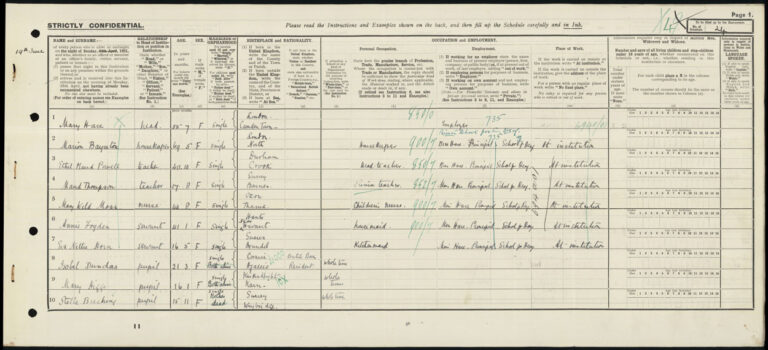
In the 1921 Census, Burgess Hill was under the registration district of Cuckfield. This Collage of Ordnance Survey map shows this registration district, with Burgess Hill located in the sub-district of Hurstpierpoint towards the bottom of the map.
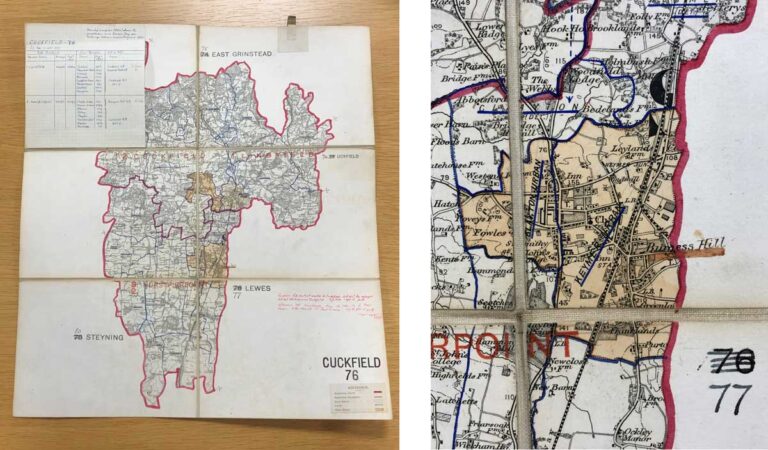
As all the pupils lived in, it is likely that most of them moved away from their family home in order to attend the school. Some pupils moved long distances, such as Dorothy Freda Knight, aged 10, whose birth place was recorded as Lostwithiel in Cornwall, and 16-year-old Jean Osborne, who was born in Dublin. Although the families of these pupils may have moved since they were born, a large proportion of pupils would not have had their families living nearby.
Discussing the achievements of Mary Hare’s school, the Mid Sussex Times reported that ‘So successful have been the methods adopted by Miss Hare that children from all parts of the world have been placed under her care, some of her pupils coming from Canada, South America, Africa and India.’ (See footnote 3.) Although at the time of the 1921 Census, there were no pupils from these locations, this newspaper report shows that pupils travelled huge distances to attend the school.
It is unclear why Hare chose Burgess Hill as the location for the school. The school’s Sussex location may have played a role in some families sending their children there, perhaps if it was the closest deaf school to where they lived. However, it was more likely that Hare’s reputation as a pioneer of deaf education influenced families to send their children to Dene Hollow Oral School for the Deaf. In 1928, Hare was the first woman to be elected as chair of the National College of Teachers of the Deaf.
Accounts from the time show that the school became an integral part of the local community in Burgess Hill. The Mid Sussex Times reported that:
‘One often sees a cluster of children and an adult with a donkey in the streets at Burgess Hill. The little ones are pupils of Miss Hare’s school and whether with the donkey or another playmate, a goat, they appear supremely happy.’
‘Unique Establishment at Burgess Hill’, Mid Sussex Times, 22 September 1925, p. 5
This extract also suggests that the school may have kept animals too. Furthermore, pupils of the school often gave dance displays which saw family members and friends of the children attend, in addition to members of the local community (see footnote 4).
Hare herself also took an active role in the community and was involved in local politics. After her move to Sussex, Hare became a member of the local Women’s Liberal Association and was active in the women’s suffrage movement. Like hundreds of women’s suffrage supporters, Hare boycotted the 1911 Census and refused to give any details about herself, her staff, or her pupils. Instead, she wrote across her census paper ‘Women don’t count therefore they will not be counted’.
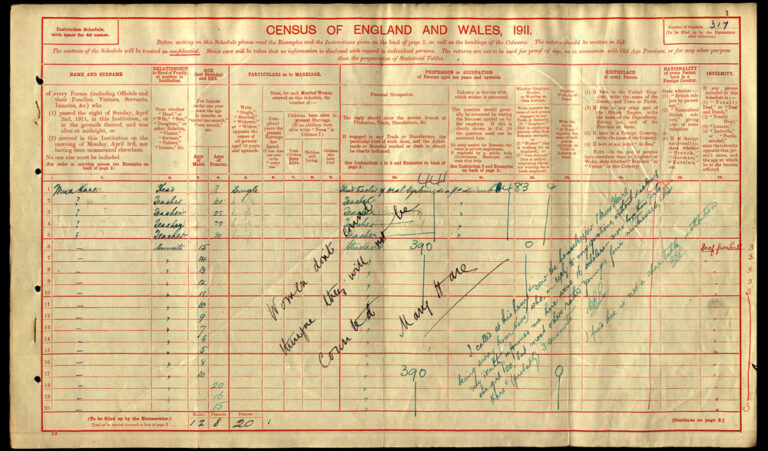
After leaving the Women’s Social and Political Union, Hare subsequently joined the Women’s Freedom League and became honorary secretary of the Brighton branch. During the First World War, Hare was influential in running the Women Police Volunteers in Brighton, and in 1919 she became the first woman to be elected to the Burgess Hill Urban District Council (see footnote 5).
Following Hare’s passing in November 1945, the school was renamed the Mary Hare Grammar School for the Deaf in 1946. It subsequently relocated as ‘[t]he school is very inadequately housed at Burgess Hill and Arlington Manor, near Newbury, has been purchased to provide new premises.’ (See footnote 6.) The school is still running today and continues to promote the oral of method of teaching. After the school’s renaming in 1946, it was declared that the school ‘carries on the pioneer[ing] work of Miss Mary Hare who had a great reputation both at home and abroad in the field of deaf education (see footnote 7).
As one of our Trailblazing Women of the 20s, Mary Hare made a lasting contribution to the field of deaf education. Watch our short BSL-interpreted film about her life here.
20sStreets is an exploration of local history stories in the 1921 Census, connecting people of the 2020s with people of the 1920s. Find out more.
Footnotes
- ‘Mary Hare History’, https://www.maryharehistory.org.uk/articles/jean_saks.html (accessed 13 October 2022)
- Memorandum produced by the Ministry of Education, ED 32/1329, The National Archives
- ‘Unique Establishment at Burgess Hill’, Mid Sussex Times, 22 September 1925, p. 5
- ‘Dancing to Unheard Music: Display by Pupils of a Burgess Hill Oral School’, Mid Sussex Times, 3 April 1928, p. 1
- Elizabeth Crawford, ‘Mary Adelaide Hare’, Oxford Dictionary of National Biography, https://www.oxforddnb.com/view/10.1093/ref:odnb/9780198614128.001.0001/odnb-9780198614128-e-369185?rskey=VY0TIp&result=2 (accessed 13 October 2022)
- Letter to B.D. Mackie (Ministry of Fuel and Power) to C.L Hobbs (Ministry of Education), 13 September 1948, ED 32/1329, The National Archives
- Memorandum produced by the Ministry of Education, ED 32/1329, The National Archives
What a fascinating story,Mary Hare must have been a very determined lady.I wonder if the oral way of teaching is very widespread today.
Wonderful to read about this amazing woman.
I myself was born profoundly deaf and was taught to speak rather than sign.
Had I not been taught to speak I would not today be able to deliver talks and lead walks celebrating local history.
Glad to hear that you enjoyed the blog and thank you for sharing your experience.
I went to MHGS 1986-1991 and loved every year of it,
Thanks for your comment and for sharing this, it’s lovely to hear that you enjoyed the school.